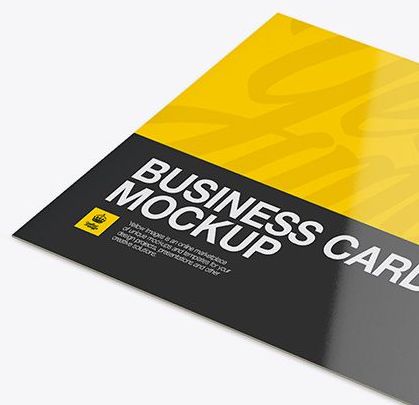Matte vs. Gloss: How to Choose the Right Print Finish for Your Project
Matte vs. Glossy Finish: How to Choose the Right Print Finish for Your Project
When completing a new print project, one of the final decisions to make is which finish to incorporate for your design. Matte and gloss finishes are often the two most popular choices debated on. Each has a distinct advantage that impacts the final look and feel of your printed material. Understanding the differences between these finishes and their best applications will help you to make an informed decision that best aligns with your end goal.
Matte Finish: Subtle and Sophisticated
A matte finish is characterized by its non-reflective surface, which gives it a smooth, muted appearance. This type of finish is ideal for creating an elegant and sophisticated look, making it a popular choice for high-end brands and professional materials. Matte finishes are often used for business cards, brochures, and presentations where a more understated, polished aesthetic is desired.
One primary benefit of a matte finish is its ability to reduce glare and fingerprints, making it easier to view under various lighting conditions. This quality makes matte finishes particularly suitable for text-heavy documents, as it ensures that the content remains easily readable. Additionally, the non-reflective nature of matte finishes can give printed colors a softer, more natural look, which is ideal for materials that aim to convey a more subdued, professional tone. However, it’s worth noting that matte finishes can sometimes make colors appear less vibrant compared to their glossy counterparts. If your project relies heavily on bold, vivid colors, this may be an important pint worth considering.

Gloss Finish: Vibrant and Eye-Catching
In contrast, a gloss finish offers a shiny, reflective surface that enhances the vibrancy and depth of colors. This finish is particularly effective for projects that aim to grab attention, such as marketing materials, photos, and product packaging. The reflective quality of a gloss finish amplifies color contrast and sharpness, making images and designs appear more dynamic and striking.
Gloss finishes are also known for their durability, as the shiny surface tends to resist scratches and moisture better than matte finishes. However, the reflective nature of gloss finishes can sometimes lead to glare, making them less suitable for text-heavy documents where readability is crucial. Additionally, gloss finishes may show fingerprints and smudges more easily, which can detract from the overall appearance of your printed material if not properly maintained.

Choosing the Right Finish
When deciding between matte and gloss finishes, consider the purpose of your project. If your goal is to create a professional, elegant look with easy readability, a matte finish may be the best choice. On the other hand, if you want to produce vibrant, eye-catching materials that stand out, a gloss finish might be the more ideal option.
Ultimately, the choice between matte and gloss should be guided by the specific needs of your project, as well as the impression you want to leave on your audience. If you are having a hard time coming to a final decision on what might be best for your printed project, our team at Triangle Printing and Marketing is happy to help. We will gladly aid you in selecting the finish that best complements your goals for your printed content.



